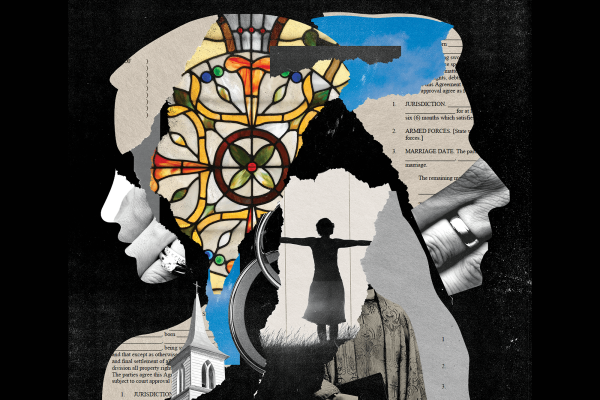SAM’S PARTNER HIT them. Sam knows the partner is at fault, but can’t shake the feeling that getting a “no-fault” divorce would be a lie. “I really don’t know what to say,” admitted a colleague and friend. My friend was a new pastor with a church member in an abusive marriage; we’ll call that church member Sam. My friend walked with Sam as they made the decision to get a lawyer, but they were both overwhelmed with the specifics of the divorce proceedings. “I had no idea there were this many layers to the process,” my friend said. “And frankly, I’m still reeling at the fact that my work as a pastor would include helping someone see the importance of pursuing a divorce, but I just don’t think Sam will survive in this marriage.”
Christian tradition holds marriage to be a public, sacred covenant made by two people before God, intended to be a lifelong commitment. Yet as Christians know as well as anyone — divorce rates among Christians are comparable to the general population — marriages end in divorce for a variety of reasons ranging from poor communication to domestic violence or abuse. Some Christians are against divorce in nearly any circumstance; other Christians are more open to divorce as an acceptable choice, but do not know the different legal options, what these options afford the individuals seeking a divorce, and how those options may or may not align with their faith. And regardless of a church’s views on divorce, I’ve observed that few churches talk openly or well about it.
My journey with this topic began in 2015 with my own divorce. Unlike Sam, I was not a victim of domestic violence. But like Sam, I didn’t want a divorce — and I really didn’t want a no-fault divorce. In the U.S., couples typically choose between an often-lengthy fault-based divorce, where blame is assigned (e.g., abuse, adultery), and no-fault divorce based on irreconcilable differences, which keeps a couple’s opinions about where fault lies separate from the legal process — and is usually quicker. Choosing “no-fault” felt dishonest to what I’d experienced. I couldn’t square it with my faith; it felt too quick, too easy. I wanted to feel the vindication that I thought assigning fault might bring. These feelings were fueled by a lingering sense of self-righteousness rooted in my religious convictions.
Read the Full Article

